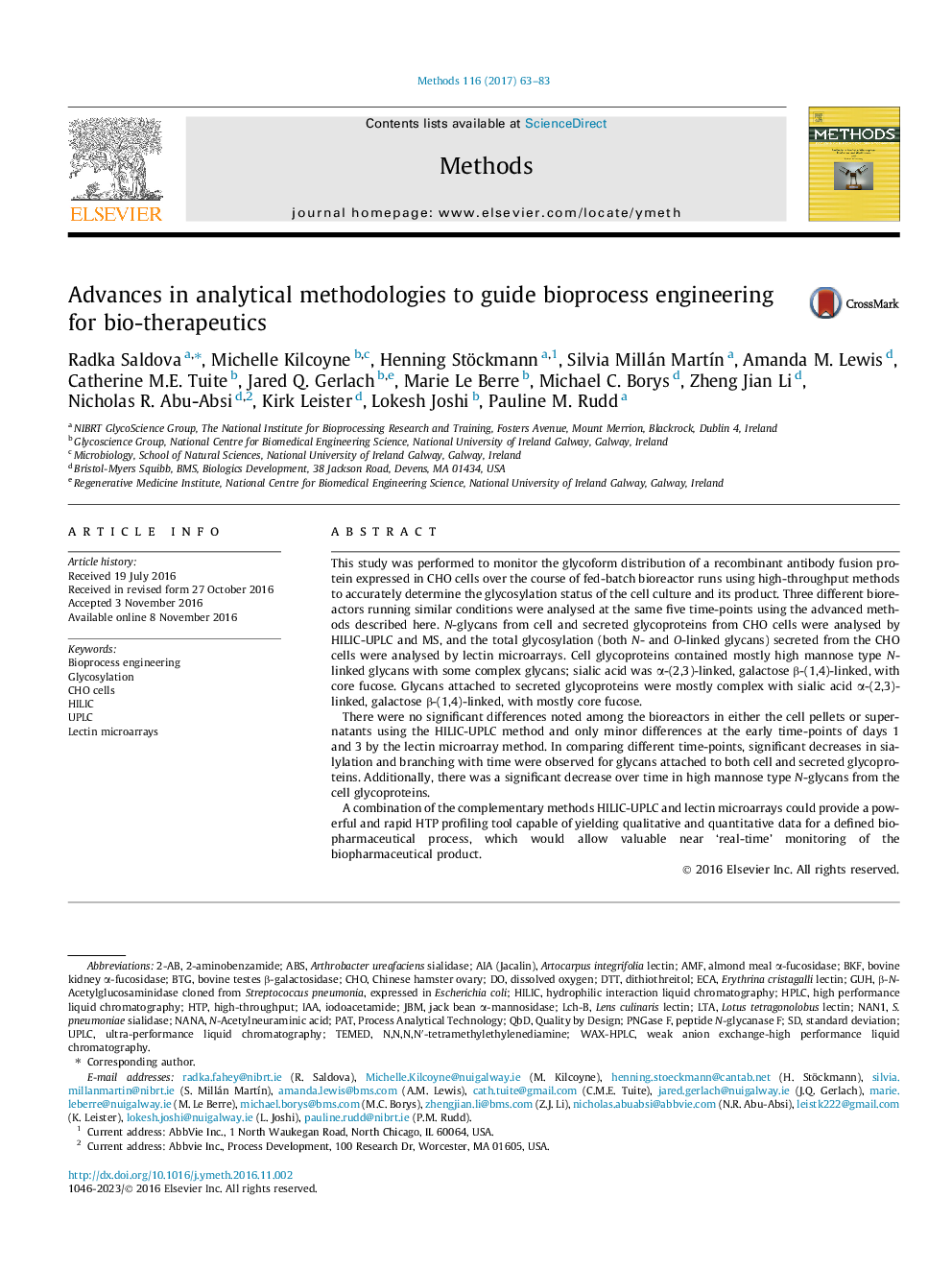| کد مقاله | کد نشریه | سال انتشار | مقاله انگلیسی | نسخه تمام متن |
|---|---|---|---|---|
| 5513657 | 1541210 | 2017 | 21 صفحه PDF | دانلود رایگان |
- HILIC-UPLC and lectin microarrays are complementary methods.
- HILIC-UPLC provides detailed relative quantitative analysis.
- Lectin microarrays provide rapid glycan analysis.
- Using these methods in combination is a powerful HTP profiling tool.
- They enable near 'real-time' monitoring of the biopharmaceutical products.
This study was performed to monitor the glycoform distribution of a recombinant antibody fusion protein expressed in CHO cells over the course of fed-batch bioreactor runs using high-throughput methods to accurately determine the glycosylation status of the cell culture and its product. Three different bioreactors running similar conditions were analysed at the same five time-points using the advanced methods described here. N-glycans from cell and secreted glycoproteins from CHO cells were analysed by HILIC-UPLC and MS, and the total glycosylation (both N- and O-linked glycans) secreted from the CHO cells were analysed by lectin microarrays. Cell glycoproteins contained mostly high mannose type N-linked glycans with some complex glycans; sialic acid was α-(2,3)-linked, galactose β-(1,4)-linked, with core fucose. Glycans attached to secreted glycoproteins were mostly complex with sialic acid α-(2,3)-linked, galactose β-(1,4)-linked, with mostly core fucose.There were no significant differences noted among the bioreactors in either the cell pellets or supernatants using the HILIC-UPLC method and only minor differences at the early time-points of days 1 and 3 by the lectin microarray method. In comparing different time-points, significant decreases in sialylation and branching with time were observed for glycans attached to both cell and secreted glycoproteins. Additionally, there was a significant decrease over time in high mannose type N-glycans from the cell glycoproteins.A combination of the complementary methods HILIC-UPLC and lectin microarrays could provide a powerful and rapid HTP profiling tool capable of yielding qualitative and quantitative data for a defined biopharmaceutical process, which would allow valuable near 'real-time' monitoring of the biopharmaceutical product.
127
Journal: Methods - Volume 116, 1 March 2017, Pages 63-83
